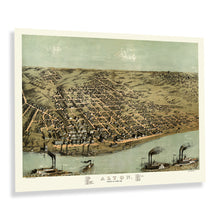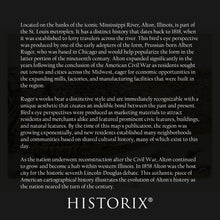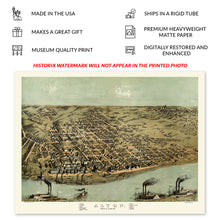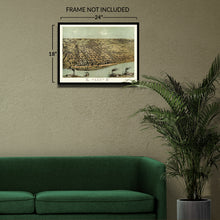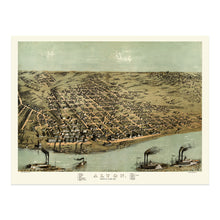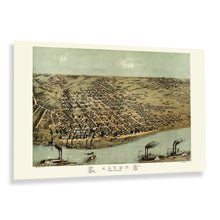
Feature Points
- VINTAGE MAP REPRODUCTION: You’ll love this high quality historic reproduction of 1867 Alton Illinois Map Poster. Our museum quality prints are archival grade, which means it will look great and last without fading for over 100 years. Our print to order maps are made in the USA and each map is inspected for quality. This beautiful artwork is a perfect addition to your themed decor. Vintage maps look great in the home, study or office. They make a perfect gift as well.
- MUSEUM QUALITY: This high quality map print will be a great addition to your vintage-themed wall. Don't waste money on cheap-looking, thin paper posters. We use thick, fine art print quality matte paper. Our professional’s choice matte paper displays artwork in high detail without glare. The color is vibrant and text is easy to read. When framed, this map looks absolutely stunning.
- A LOOK BACK AT HISTORY: This is an impressive, historic reproduction of 1867 Map of Alton Illinois Poster Print. A true piece of history. See our product description section for more fascinating information about this historic map and its significance.
- READY TO FRAME: This print includes a 0.2 inch border for a perfect frame fit and look. Our maps are designed to fit easy-to-find standard frame sizes, saving you money from having to pay for a custom frame. Each map is inspected for quality and shipped in a rigid tube.
- HISTORIX: We love history and art. Sometimes old maps have tears, folds, separations and other blemishes. We digitally restore and enhance maps while keeping its historical character. All our maps are proudly made in the USA. Customers all over the world love our vintage maps and we know you will too.
Â
Additional Information
Located on the banks of the iconic Mississippi River, Alton, Illinois, is part of the St. Louis metroplex. It has a distinct history that dates back to 1818, when it was established to ferry travelers across the river. This bird's eye perspective was produced by one of the early adopters of the form, Prussian-born Albert Ruger, who was based in Chicago and would help popularize the form in the latter portion of the nineteenth century. Alton expanded significantly in the years following the conclusion of the American Civil War as residents sought out towns and cities across the Midwest, eager for economic opportunities in the expanding mills, factories, and manufacturing facilities that were built in the region.
Ruger's works bear a distinctive style and are immediately recognizable with a unique aesthetic that creates an indelible bond between the past and present. Bird's eye perspectives were produced as marketing materials to attract residents and merchants alike and featured prominent civic features, buildings, and natural features. By the time of this map's publication, the region was growing exponentially, and new residents established many neighborhoods and communities based on shared cultural history, many of which exist to this day.
As the nation underwent reconstruction after the Civil War, Alton continued to grow and become a hub within western Illinois. In 1858 Alton was the host city for the historic seventh Lincoln-Douglas debate. This authentic piece of American cartographical history illustrates the evolution of Alton's history as the nation neared the turn of the century.








